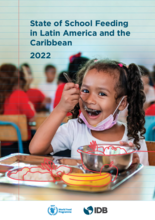Peru
- Almost 33%
- of population at risk of poverty
- 51.7%
- of Peruvians are food insecure
- 33 million
- population
Peru has achieved remarkable economic growth in the past 20 years and was classified as an upper-middle-income country in 2008. In the same period, poverty halved and chronic malnutrition among children aged under 5 years decreased.
However, since 2017, the country has faced major challenges. Public expenditure has fallen steadily, monetary poverty has risen, and the frequency and intensity of climate-related emergencies have increased. All this has slowed progress in reducing structural inequalities. In addition, the aftermath of the COVID-19 pandemic threatens the progress made in the fight against poverty and malnutrition.
By 2024, almost 52 percent of the population suffered from moderate or severe food insecurity. Malnutrition – including anaemia and obesity and overweight among children and adolescents – is on the rise. Chronic malnutrition is one of the main public health problems in Peru among children under 5 years of age.
The World Food Programme provides food assistance and nutrition support, while helping to build resilience and ensure the effectiveness of the supply chain.
What the World Food Programme is doing in Peru
-
Food Assistance
-
WFP is working with Peruvian authorities so that crisis-affected populations can meet their urgent food, nutrition and other essential needs before and during multi-pronged crises and disasters.
-
Nutrition
-
One of WFP’s main goals is to support national authorities in addressing the triple burden of malnutrition – undernutrition, micronutrient deficiencies and overweight. This includes working to improve the nutritional status of Indigenous people most at risk of malnutrition. – through helping improve government capacity in managing health and social government programmes and by promoting rice fortification, for example.
-
Resilience building
-
To confront the vulnerability of food systems and ecosystems to multifaceted shocks and the growing threats of climate change, WFP trains authorities in areas including adaptability of vulnerable communities and preservation of ecosystems.
-
Supply chain
-
As a co-leader of the sectoral working groups on food security and logistics in the National Humanitarian Network, WFP provides logistics support and other services to improve supply chain efficiency and increase preparedness for shocks and stressors.
Peru news releases
Go to pagePartners and donors
Find out more about the state of food security in Peru
Visit the food security analysis pageOperations in Peru
Contacts
Office
Av. José Pardo 831. Pisos 7 y 8 Miraflores - Lima
Peru





